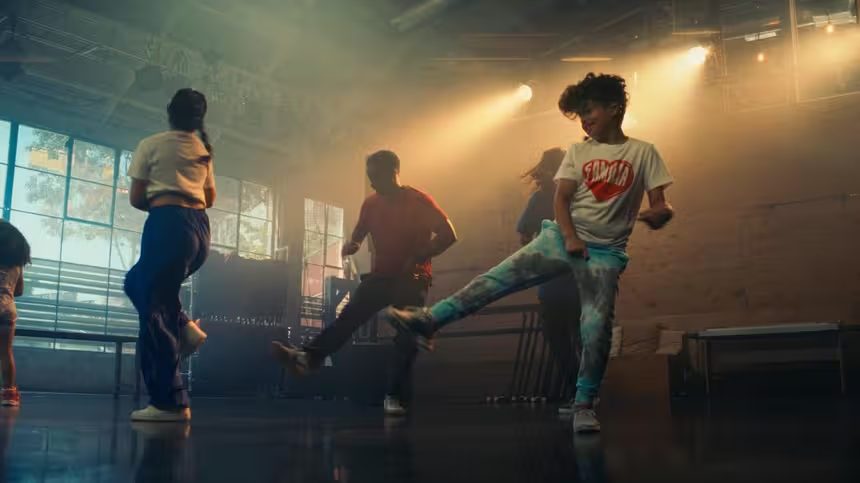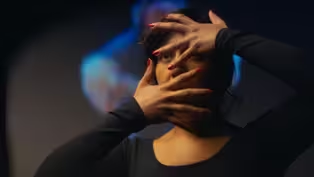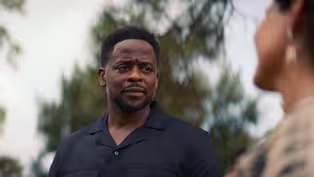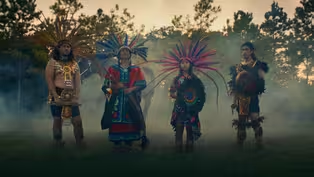
Blind Painter John Bramblitt Paints Dulé Hill's Portrait
Clip: Episode 3 | 2m 5sVideo has Closed Captions
Blind painter, John Bramblitt, uses new technology to paint Dulé Hill’s portrait.
In Denton, Dulé Hill connects with John Bramblitt, a blind painter. John lost his vision in 2001 and then re-taught himself to paint by touch. He currently leads workshops at museums like the Guggenheim, helping others with blindness reclaim their artistic abilities. John shows Dulé his painting process by painting Dulé’s portrait.
Problems playing video? | Closed Captioning Feedback
Problems playing video? | Closed Captioning Feedback
This program was made possible by a grant from Anne Ray Foundation.

Blind Painter John Bramblitt Paints Dulé Hill's Portrait
Clip: Episode 3 | 2m 5sVideo has Closed Captions
In Denton, Dulé Hill connects with John Bramblitt, a blind painter. John lost his vision in 2001 and then re-taught himself to paint by touch. He currently leads workshops at museums like the Guggenheim, helping others with blindness reclaim their artistic abilities. John shows Dulé his painting process by painting Dulé’s portrait.
Problems playing video? | Closed Captioning Feedback
How to Watch The Express Way with Dulé Hill
The Express Way with Dulé Hill is available to stream on pbs.org and the free PBS App, available on iPhone, Apple TV, Android TV, Android smartphones, Amazon Fire TV, Amazon Fire Tablet, Roku, Samsung Smart TV, and Vizio.
Buy Now

5 Artists Showcasing the Power of Art
From colorful cabarets and moving movies to artistic techniques that transcend the senses, here are five inspiring artists highlighted in The Express Way with Dulé Hill.Providing Support for PBS.org
Learn Moreabout PBS online sponsorship♪ Dulé: It's really magnificent.
John: I'd love to do a painting of you, if you wouldn't mind if I felt your face and saw what you look like.
Dulé: I would love it.
John: Have a seat.
Dulé: Sure.
This is a first.
All right.
John: Well, you know, for me, too.
I've never felt your face before, so it's a first for me.
I usually start with the hair.
I'm gonna squeeze in here.
Dulé: OK. All right.
John: And what you're looking for is the outside line and then the ears.
Find the jawline... and then the lips.
Thank you so much, Dulé.
Dulé: Walk me through your process.
How do you get to something from nothing?
John: A lot of times, I'll start with feeling a face, but also, this is the first time in history where people with visual impairments can use technology and have screen readers to be able to understand a photograph.
So this has scanned a photo of your face.
I can use the software to start at least getting an idea of a basic composition.
You know, just the basic head shape or where--how far apart the eyes are and that sort of thing, like with the anatomy.
[Computer beeping in varying pitches] But, like, here, so, like, where you can follow it...
So whenever I hear that high pitch, I know I'm on a line.
Then it stops.
But I can feel the angle of which way my finger's going, so when I go over here, I get going, and I know, OK, well, I'm at least going to go in this same sort of angle.
Dulé: Right.
[Beeps] ♪ A lot of times when you think of a disability, there's, like, "Oh, that's too bad," or, "That's sad."
You get this negative sort of feeling.
And art has a great way to show that it's not about what you lost, but it's about, What can you do and what can you experience?
♪
Dulé Hill Workshops New Cara Mía Theatre Production
Video has Closed Captions
Clip: Ep3 | 2m 31s | Dulé Hill works with Liz Magallanes and David Lozano on a new Cara Mía Theatre production. (2m 31s)
Video has Closed Captions
Preview: Ep3 | 30s | In Texas, Dulé Hill discovers artists fighting for representation of their communities. (30s)
Dulé Learns the Mexica Handshake from Aztec Dancer Rainflowa
Video has Closed Captions
Clip: Ep3 | 2m 59s | Dulé Hill learns the “Mexica” Handshake from Aztec Dancer Abuela M’api Rainflowa. (2m 59s)
Providing Support for PBS.org
Learn Moreabout PBS online sponsorshipSupport for PBS provided by:
This program was made possible by a grant from Anne Ray Foundation.














